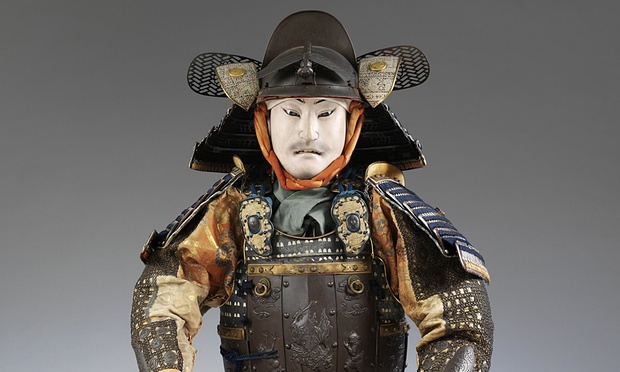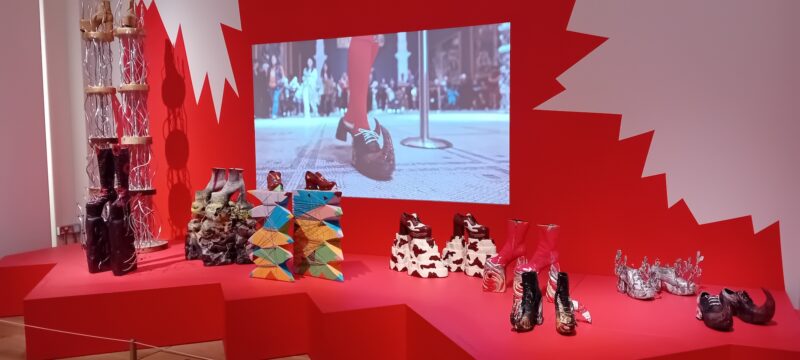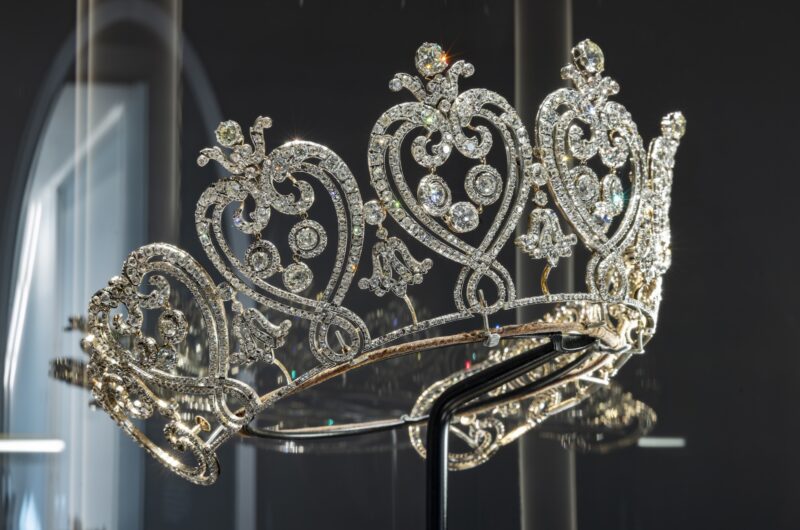A suit of armour, c1800, that will go on display at the Toshiba Gallery of Japanese Art, V&A, London. Photograph: Victoria and Albert Museum, London
Even V&A staff who have lived with him for years find him extremely sinister. The “living doll” is among hundreds of objects, from a towering 13th-century Buddhist statue to minute beads and toggles with decoration barely visible to the naked eye, that have been through painstaking conservation in time for the reopening of the museum’s Japanese gallery this week.
The new displays will cover centuries of Japanese craftsmanship, from 700-year-old blades still so murderously sharp the conservators were given special training in Samurai sword fighting by Asian department curator Greg Irvine, to a luridly coloured Hello Kitty rice cooker.

A saccharine-sweet “Lolita” outfit, a frilly flowery blue and pink dress with lace trimmed petticoats and bloomers, made three years ago by fashion brand Baby, The Stars Shine Bright, only needed new legs for the display figure so that it could wear the matching pink ribboned shoes. The final effect might have startled Lewis Carroll, since it was inspired by his Alice in Wonderland.

Fragile antique textiles have been gently cleaned, many coming out of a life time in storage. Some are just as startling as the Lolita costume, including a little boy’s kimono made in the1930s and patterned with images of an aeroplane, Mount Fuji and Tower Bridge in London. The garment records a real flight, the first from Japan to Europe in 1937, when Masaaki Iinuma flew his Mitsubishi plane, Kamikaze-Go, almost 10,000 miles in just over 94 hours, including refuelling stops, and landed at Croydon airport on 9 April 1937. The aviator became a celebrity, but died in the second world war, said to have walked into a spinning propellor in shock at the news of the Pearl Harbour attack.
Anna Jackson, keeper of the Asia department, finds the little kimono a poignant object, testament to a period of mutual interest of Japan and Britain in the build-up to war – which probably explains why the garment appears never to have been worn.

Of the 550 pieces going on display in the new gallery, more than 400 needed conservation work, a project that has taken years of work by specialists in paper, metal, ceramics, lacquer, leather and textiles, a complex project coordinated by Victor Borges, senior sculpture conservator at the V&A.
The lacquer pieces needed particular care, which senior furniture conservator Dana Melcher explained was unnerving for her team, because some of it went against a fundamental principle of modern western conservation practice, that all their work should be reversible.
Many of the objects still look perfect to the naked eye, but under a magnifying glass minute fragments of gold leaf, mother of pearl, and gemstones in the decoration can be seen lifting and detaching. Not only is the traditional Japanese urushi lacquer derived from highly toxic tree sap – children of the traditional craftsmen are said to have been fed tiny quantities from babyhood to develop an immunity – but once applied and cured, it is irreversible and cannot be removed without destroying the object. Unlike painted surfaces, the lacquer also only sets at a high humidity level, so the treated objects have had to go into a vapour cabinet watched over by an anxious curator. Too much humidity and the gleaming surface will dull and spoil; too low and it will never set. Each piece finished and signed off has been a great relief to the team.
The living doll was another complex piece made of many different materials. He is a very rare survivor of an extraordinary group made in the 19th century and shown in Japan and at international exhibitions, where their unnervingly lifelike character was much admired. Life size, he has glass eyes, porcelain teeth and real human hair.
Since he came into the museum almost a century ago, he has sat scowling fiercely under an iron helmet topped with a dragonfly whose wings would have flapped in a battle charge, wearing a magnificent full suit of iron and lacquer armour. He has looked even more angry sitting in the conservation laboratory, stripped to his black underwear and scrawny wicker and paper limbs, which are being discreetly strengthened to help him carry the extra weight. Irvine patted him reassuringly on the skinny shoulder, and promised: “Don’t worry, old chap – you’ll get your armour back soon.”
• The Toshiba gallery of Japanese Art, free, at the V&A Museum London, from 4 November
guardian.co.uk © Guardian News & Media Limited 2010
Published via the Guardian News Feed plugin for WordPress.








